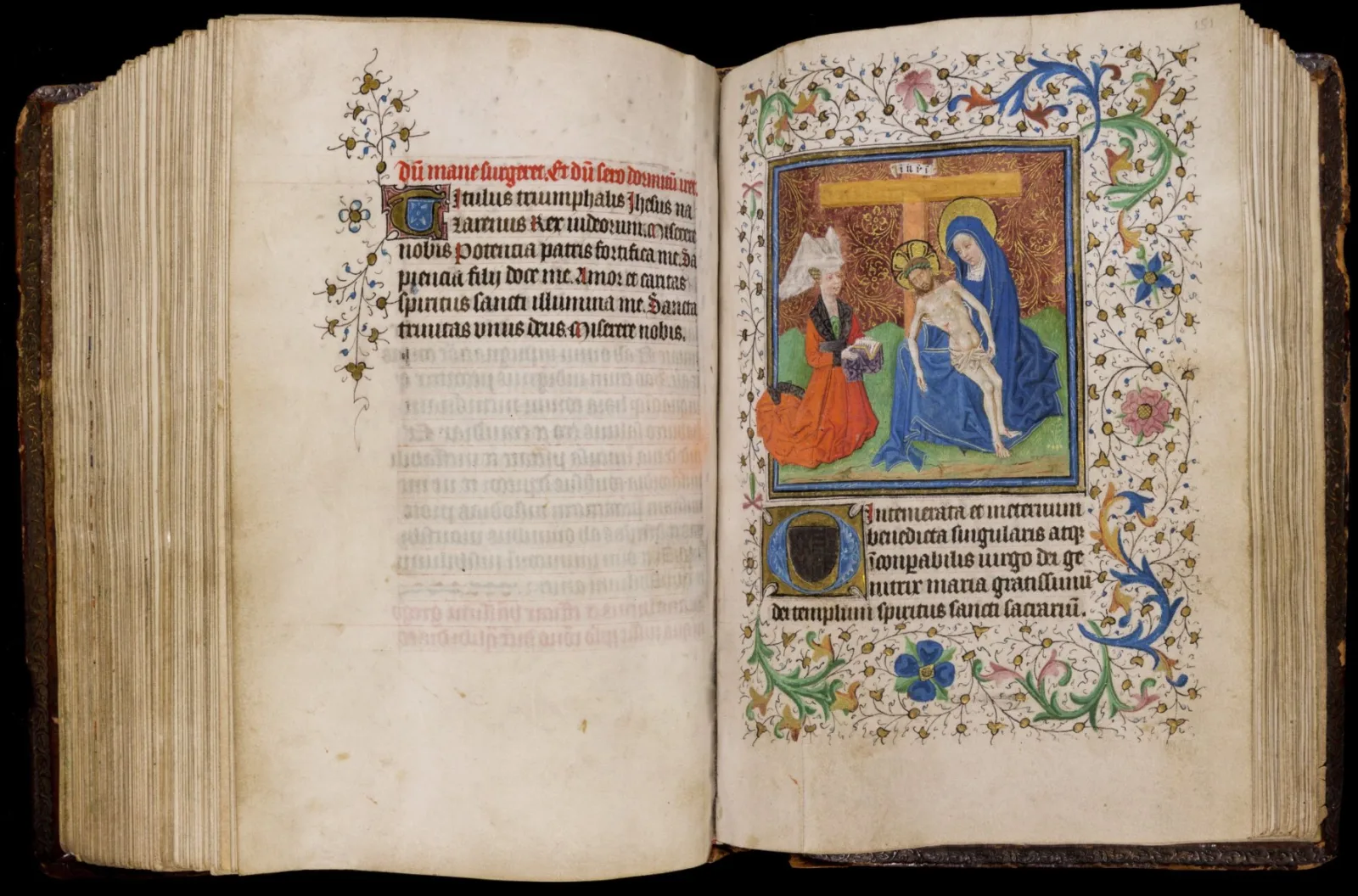We cherish every item in our collection. But in the spirit of year-end reflection, allow us the indulgence of highlighting the five most-requested Newberry collection items of 2021.
The items on this list were a big hit throughout the year. Individual readers like you studied them extensively in our reading rooms. In addition, Newberry staff featured them in virtual presentations (for classes across the country) and…in the occasional social media post.
#5. Book of Hours, ca. 1430
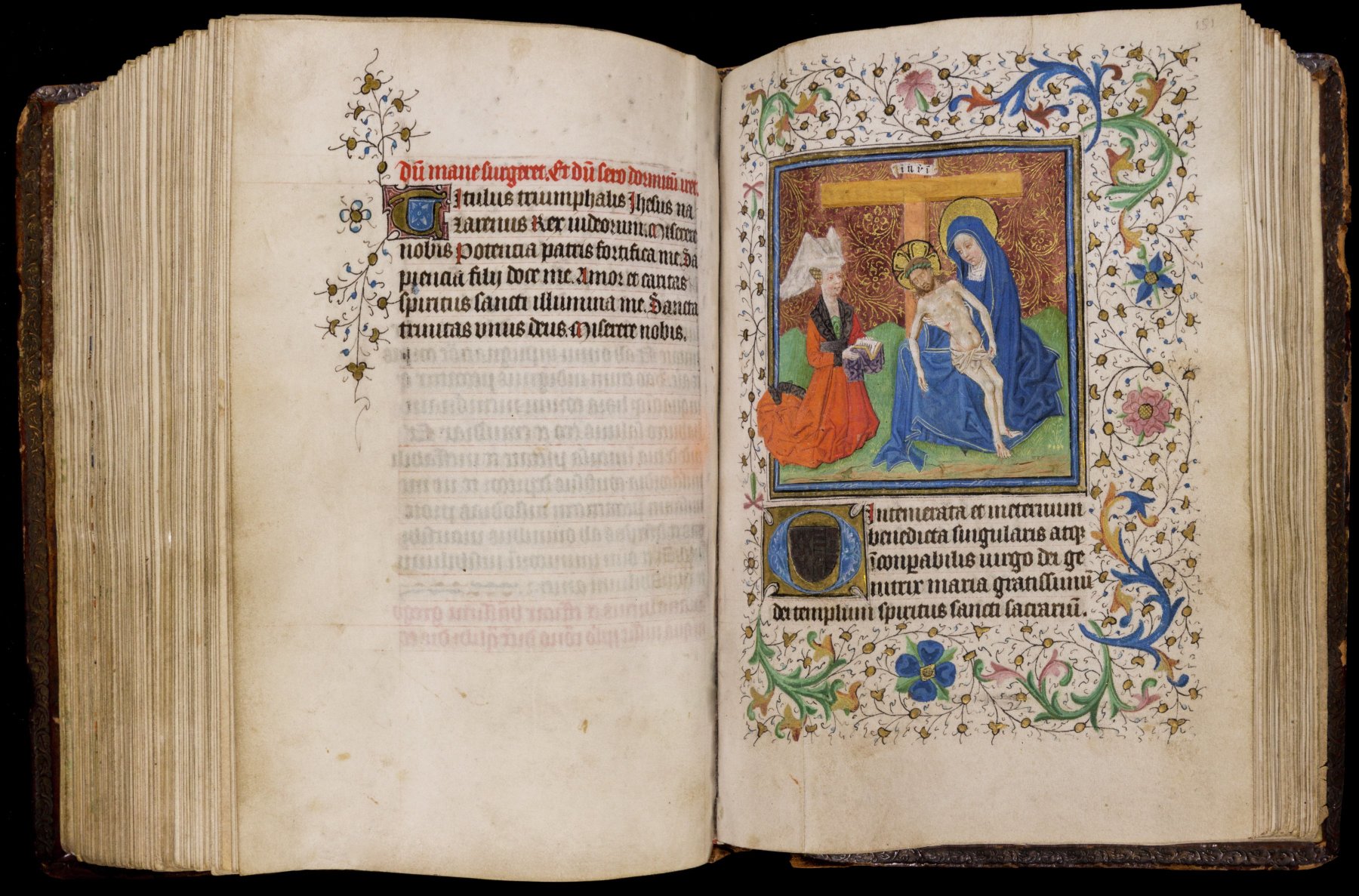
A resource for personal devotion and religious observance, books of hours contain prayers to be read or meditated upon at various times throughout the day. This particular example was owned by a noblewoman named Margaret of Croy. Margaret actually had herself painted into one of the illuminations in the book. Margaret appears to the left of Jesus and Mary, holding the very book in which the illustration appears. So meta.
View Digitized Images#4. The Black Horse Ledger, 1877-79
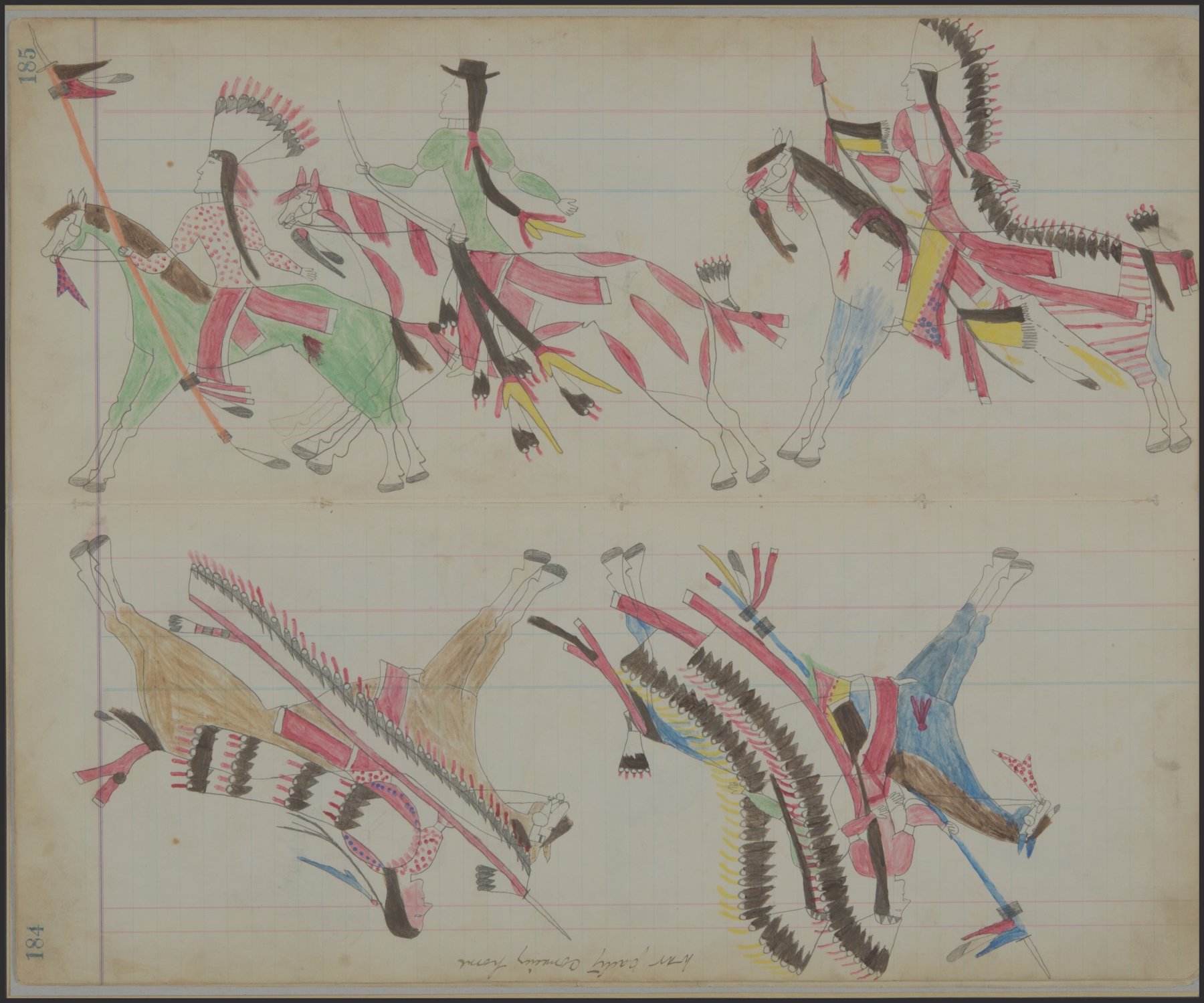
Many Plains Native communities started chronicling events pictorially on materials like rocks and buffalo hides. Beginning in the mid-19th century, they used pages of ledger books obtained from settlers. One of the most famous examples of ledger art is the “Black Horse Ledger,” illustrated by Northern Cheyenne warrior-artists in the late 1870s.
Learn more about ledger art and the Black Horse Ledger on our Source Material blog.
View Digitized Images#3. The Red Man’s Greeting by Simon Pokagon, 1893
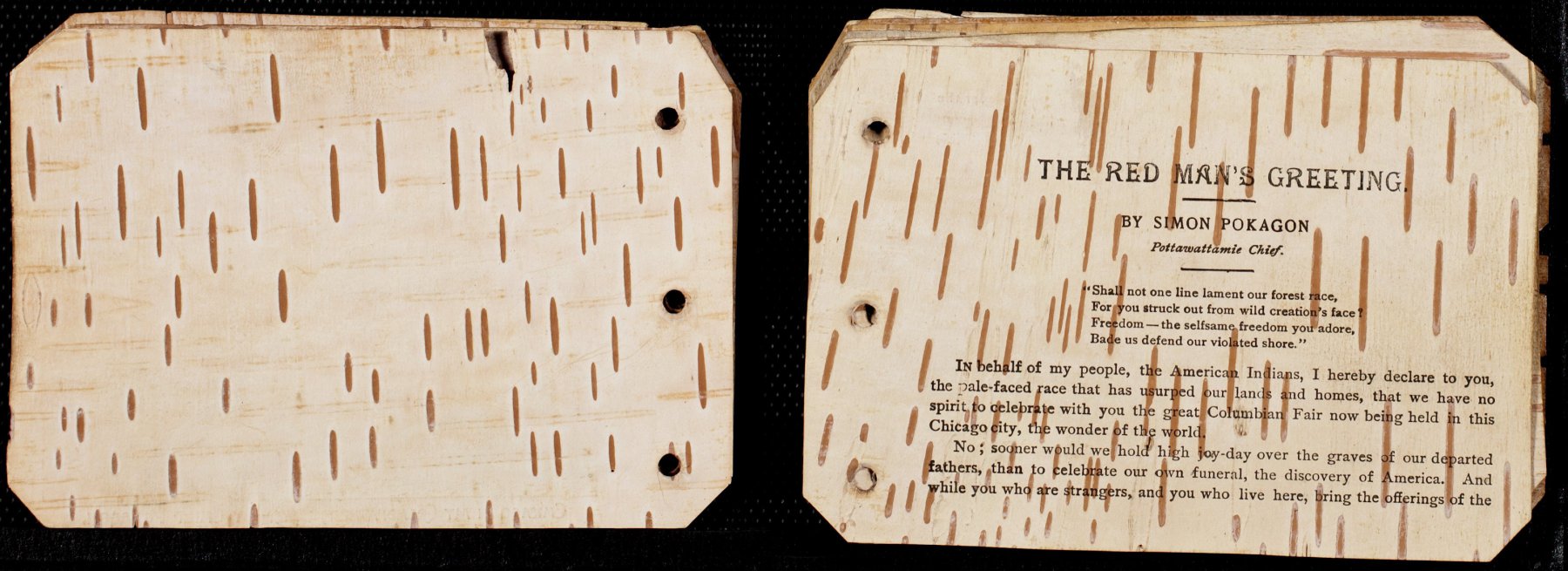
Printed on birchbark (an important material in Native communities), Simon Pokagon published The Red Man’s Greeting as a counter-narrative to the celebration of “progress” at the World’s Columbian Exposition––held in Chicago in 1893.
Learn more about The Red Man’s Greeting on our Source Material blog.
View Digitized Images#2. Copy of the Popol Vuh, 1700 - 1715
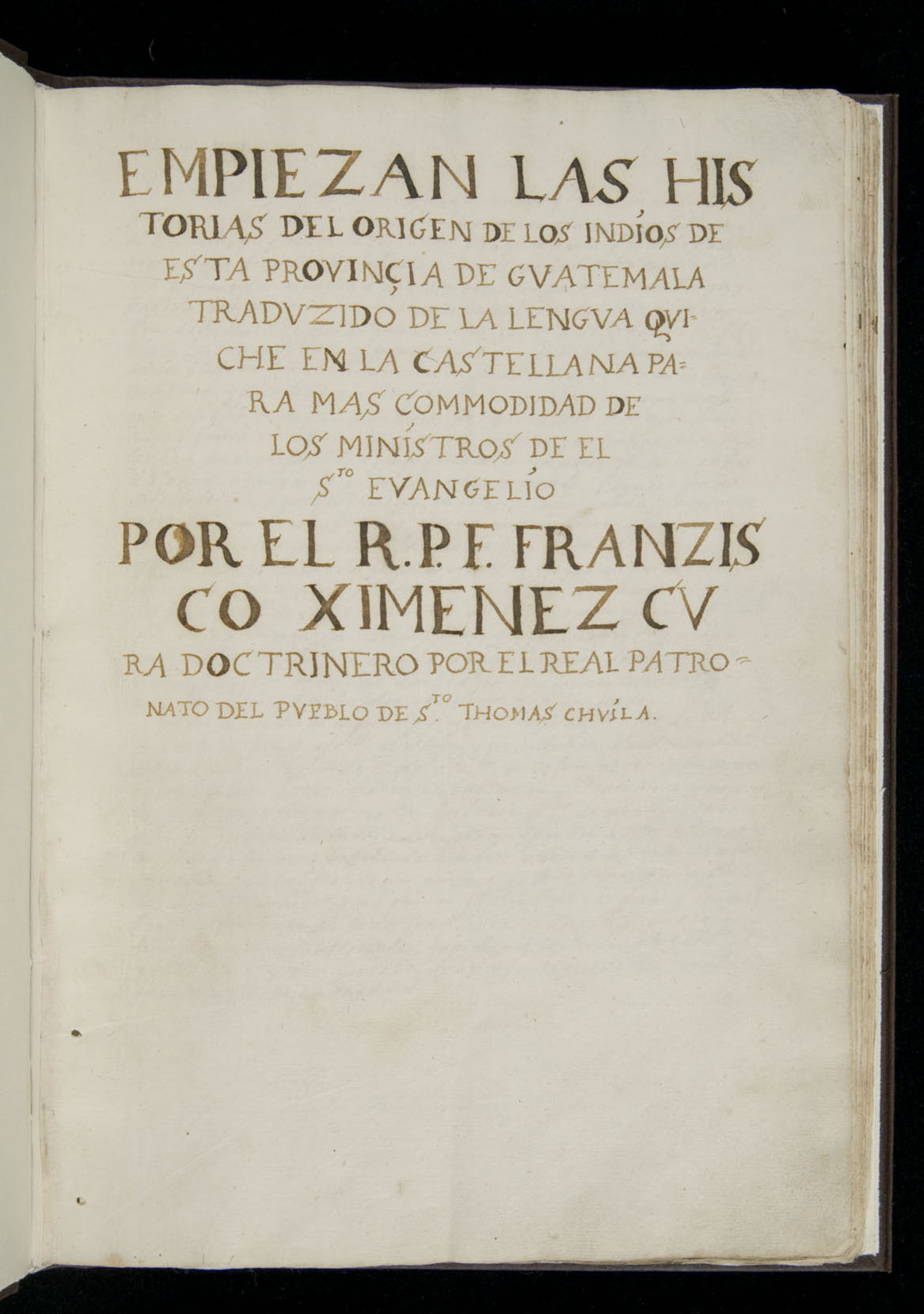
The Popol Vuh is the creation account of the Mayan people. The text weaves together stories about cosmologies, origins, traditions, and spiritual history. (“Popol” can be translated as “woven mat” and “Vuh” [or “Vuj”] as “book.”)
The Newberry’s copy of the Popol Vuh was transcribed between 1700 and 1715 by a Dominican priest named Francisco Ximénez. Some scholars believe that Ximénez’s copy was derived from an earlier version, probably prepared in the 16th century by a native speaker who’d learned Latin characters.
View Digitized Images#1. Book of Hours, ca. 1455

As part of his break from the Catholic Church, Henry VIII banned devotion to Catholic saints. The owner of this book of hours only half-complied. They crossed out the prayer to Thomas à Becket on the recto (right page) but apparently couldn’t bring themselves to deface the illustration of the saint’s murder in 1170 on the verso (left page).
View Digitized ImagesAbout the Author
Alex Teller is the Director of Communications and Editorial Services at the Newberry.
